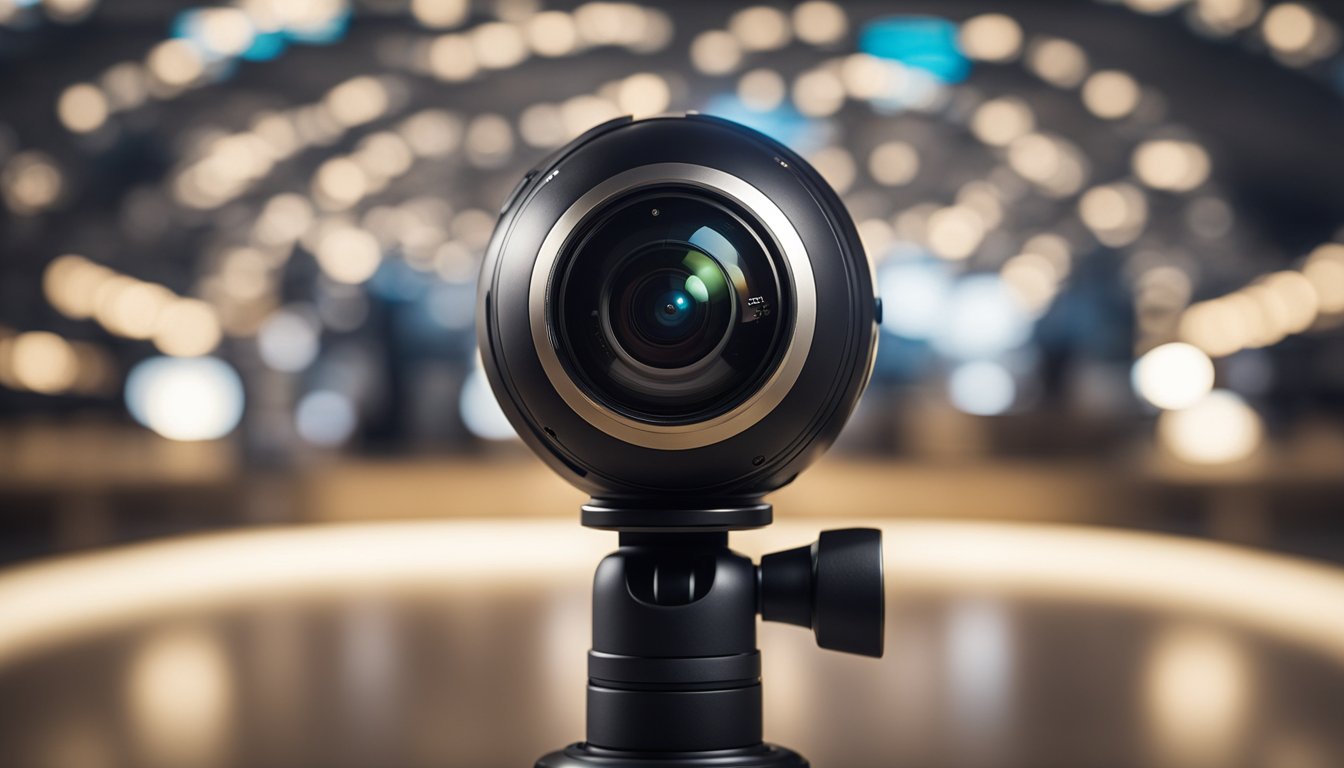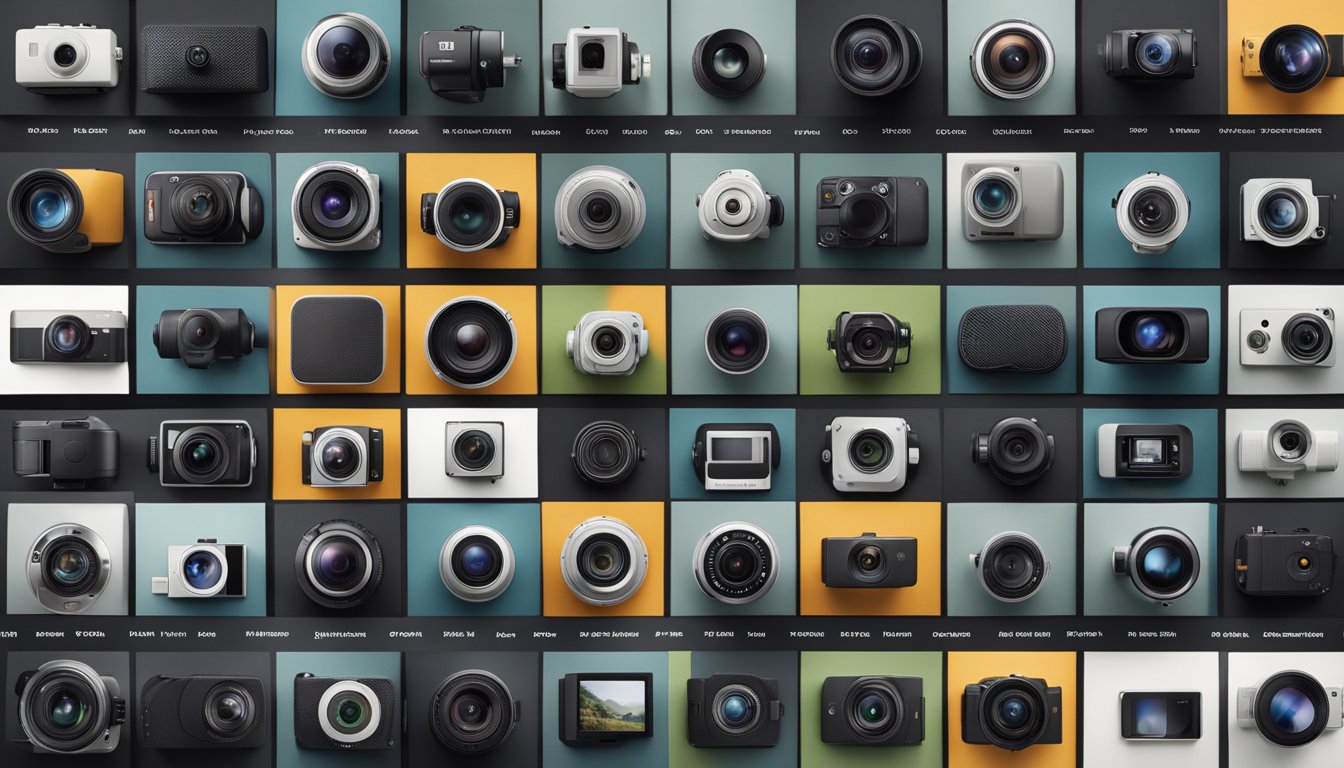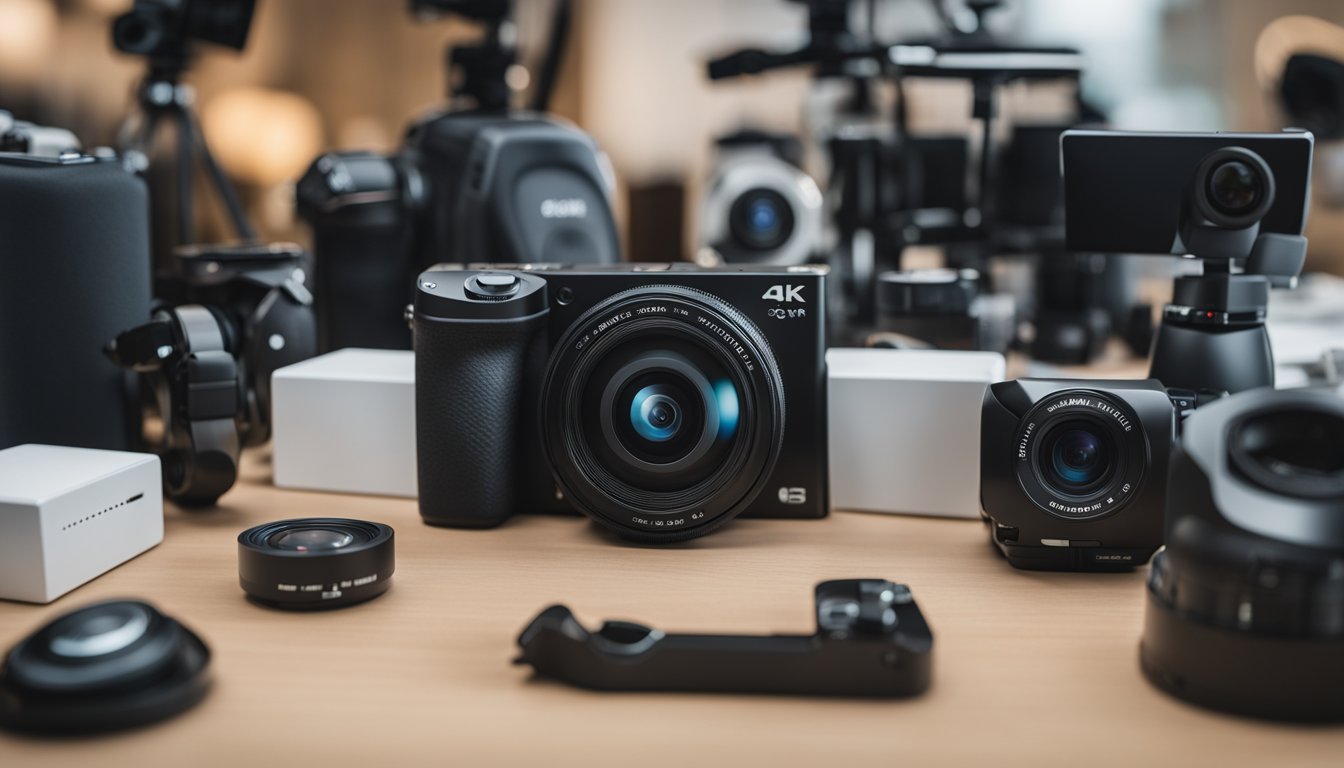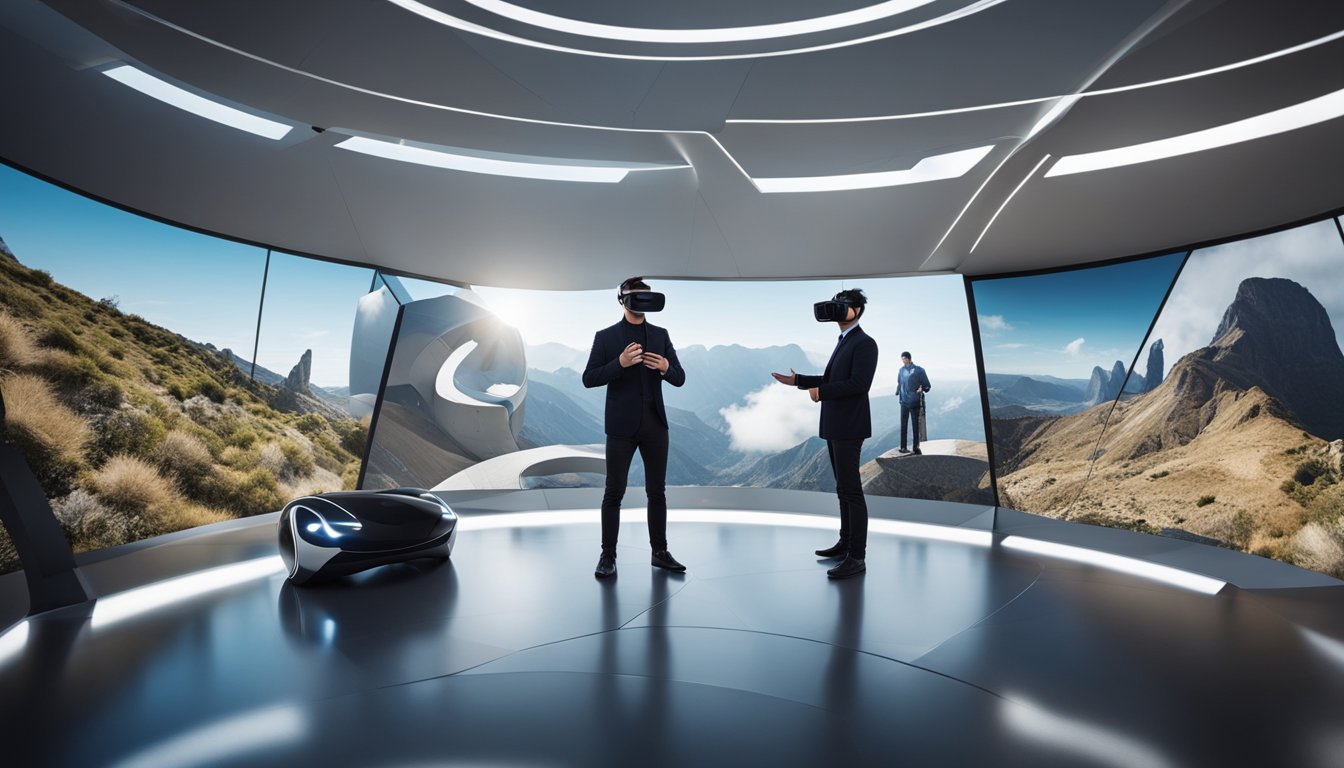When did 360 cameras come out? If you’re curious about the history of 360 cameras, you’re not alone. These innovative cameras have become increasingly popular in recent years, but they actually have a longer history than you might think. In this article, we’ll explore the evolution of 360 cameras and take a closer look at their technology and features.
The first 360 camera was invented in the mid-1990s by Apple engineer Steve Mann. However, it wasn’t until the early 2000s that 360 cameras began to gain popularity. In 2004, Google introduced Street View, which used 360-degree panoramic imagery to provide users with a virtual tour of cities around the world. This technology paved the way for the development of consumer-grade 360 cameras, which started to hit the market in the mid-2010s.
Today, 360 cameras are used for a wide range of applications, from professional photography to social media. They’ve also become an integral part of the virtual reality experience. In the following sections, we’ll take a closer look at the history of 360 cameras, their technology and features, and how they’re used in various industries.
Key Takeaways
- 360 cameras were first invented in the mid-1990s by Apple engineer Steve Mann, but they didn’t gain popularity until the early 2000s with the introduction of Google Street View.
- Today, 360 cameras are used for a wide range of applications, from professional photography to social media, and have become an integral part of the virtual reality experience.
- In the following sections, we’ll explore the evolution of 360 cameras, their technology and features, and how they’re used in various industries.
The Evolution of 360 Cameras
If you’re curious about the history of 360 cameras, you’ve come to the right place. In this section, we’ll take a look at the early innovations and mainstream adoption of 360-degree cameras.
Early Innovations
The concept of capturing a 360-degree view has been around for centuries. In fact, the first known panoramic camera was invented by an Austrian named Joseph Puchberger in 1843. However, it wasn’t until the late 1800s that the first mass-produced 360-degree panoramic camera, the Al-Vista, was introduced in America in 1898.
In the early 1900s, Robert Barker, an English painter, created the first immersive panoramic painting called “The Panorama.” This painting was displayed in a cylindrical building, allowing viewers to step inside and experience a 360-degree view of the scene.

As technology progressed, so did the development of 360 cameras. In 1857, a camera that rotated around its own axis was patented, which captured a full 360-degree view by using fan-governed clockwork mechanics. However, it wasn’t until the 1990s that the first digital 360-degree camera was introduced.
Mainstream Adoption
With the advent of digital cameras, the development of 360-degree cameras accelerated. In the early 2000s, companies like Ricoh and Kodak began producing 360-degree cameras that were affordable and accessible to the general public.
In recent years, 360-degree cameras have become increasingly popular due to their close synergy with virtual reality. Brands like Insta360, GoPro, and Ricoh have dominated the 360 camera market, but omnidirectional cameras have a longer background.
Today, 360 cameras are used in a variety of industries, including real estate, tourism, and entertainment. They allow users to capture immersive photos and videos that offer a unique perspective on the world around us.
In conclusion, the evolution of 360 cameras has been a long and fascinating journey. From the early innovations of Joseph Puchberger and Robert Barker to the mainstream adoption of digital 360-degree cameras, these devices have come a long way. With the continued advancement of technology, it’s exciting to think about what the future holds for 360 cameras and the ways in which they will continue to shape our world.
Understanding 360 Cameras
« Smartour 360 Camera Manual: Your Ultimate Guide to Capturing 360-Degree Footage
How 360 Degree Camera Works in Google Maps: A Quick Guide »
If you’re curious about the history of 360 cameras, it’s essential to understand what a 360 camera is and how it works. In this section, we’ll take a look at the basics of 360 cameras, including how they work and the different types available.
How They Work
360 cameras are designed to capture a 360-degree view of the world around you. They use multiple lenses to capture images from different angles, which are then stitched together to create a seamless 360-degree image or video.
The lenses on a 360 camera are typically arranged in a circular or spherical pattern, with each lens capturing a portion of the scene. The resulting images are then combined using software to create a single, panoramic image or video.
One of the key features of 360 cameras is their ability to capture images in equirectangular projection. This means that the image is projected onto a flat surface, like a map of the world, rather than a curved surface like the inside of a sphere. Equirectangular projection is the most common format for 360-degree images and videos, making it easy to share and view these images on a variety of devices.
Types of 360 Cameras
There are several different types of 360 cameras available, each with its own unique features and capabilities. Some of the most common types of 360 cameras include:
-
Single-lens 360 cameras: These cameras use a single lens to capture a 360-degree view of the world around you. They are typically smaller and more affordable than other types of 360 cameras, making them a great choice for beginners.
-
Dual-lens 360 cameras: These cameras use two lenses to capture a 360-degree view of the world around you. They are often more expensive than single-lens cameras but offer better image quality and more advanced features.
-
Professional-grade 360 cameras: These cameras are designed for professional photographers and videographers and offer the highest quality images and videos. They are typically larger and more expensive than other types of 360 cameras.
No matter what type of 360 camera you choose, they all offer a unique way to capture and share the world around you. With their ability to capture immersive, panoramic images and videos, 360 cameras are a great way to explore new places and share your experiences with others.
Key Players in the 360 Camera Market
If you are interested in 360 cameras, you might be wondering which companies are leading the market. Here are some of the key players in the 360 camera market:
GoPro
GoPro is a well-known brand in the action camera market. However, they have also ventured into the 360 camera market with their GoPro MAX camera. This camera can shoot 360-degree videos at 5.6K resolution and features HyperSmooth stabilization technology.
Insta360
Insta360 is a company that specializes in 360 cameras. Their Insta360 ONE R camera is a modular camera that allows you to switch between 360-degree, wide-angle, and standard lenses. It also features FlowState stabilization technology for smooth footage.
Nikon
Nikon is a company known for their cameras and lenses. They have also entered the 360 camera market with their Nikon KeyMission 360 camera. This camera can shoot 360-degree videos at 4K resolution and features electronic vibration reduction technology.
Ricoh Theta
Ricoh Theta is a company that specializes in 360 cameras. Their Ricoh Theta Z1 camera can shoot 360-degree videos at 4K resolution and features 3D spatial audio recording. It also has a built-in OLED display for easy camera control.
These are just a few of the key players in the 360 camera market. As technology continues to advance, we can expect to see even more companies enter this market and create innovative 360 cameras.
360 Camera Technology and Features
https://www.youtube.com/watch?v=qExPe-nKdfI&embed=true
If you’re curious about the history of 360 cameras, they have been around for quite some time. According to Digital Camera World, 360 cameras are devices with 180-degree forward- and rear-facing lenses that capture everything around themselves at once. But when did 360 cameras first come out? The answer is a bit more complicated than you might think.
Image Quality
When 360 cameras first came out, they were not known for their image quality. However, as technology has advanced, so has the quality of 360 cameras. Today’s 360 cameras can produce high-quality images with resolutions as high as 5.7K. This means that you can capture every detail of your surroundings, whether you’re shooting photos or videos.
Stabilization Techniques
One of the biggest challenges of shooting with a 360 camera is stabilization. Because the camera captures everything around itself, any movement can result in shaky footage. To combat this, many 360 cameras use stabilization techniques such as built-in gyroscopes, electronic image stabilization, and optical image stabilization.
Editing Software Compatibility
If you’re planning to shoot with a 360 camera, you’ll need to make sure that your editing software is compatible with the camera’s file format. Most 360 cameras shoot in a format called equirectangular, which can be edited in software like Adobe Photoshop or Premiere. However, some cameras shoot in proprietary formats, which may require special software to edit.
In conclusion, 360 cameras have come a long way since they first came out. With high image quality, advanced stabilization techniques, and compatibility with popular editing software, 360 cameras are a great tool for capturing immersive photos and videos.
360 Cameras and Virtual Reality
360 cameras have become increasingly popular in recent years due to their ability to capture immersive and interactive footage. These cameras can capture 360-degree videos and images, allowing viewers to experience a scene from all angles. But what is the connection between 360 cameras and virtual reality (VR)?
VR Headsets Compatibility
One of the main applications of 360 cameras is in VR content creation. VR headsets such as the Oculus Rift or HTC Vive are compatible with 360-degree videos and images, allowing users to experience immersive content in a virtual environment. By using a VR headset, you can feel like you are actually in the scene, looking around and exploring the environment.
To view 360-degree content in VR, it must be formatted in a specific way. The footage must be in equirectangular projection, which is a format that maps the 360-degree image or video onto a flat surface. This allows the VR headset to display the content in a way that feels immersive and realistic.
Creating Virtual Tours
Another popular application of 360 cameras is in creating virtual tours. Virtual tours allow users to explore a space without physically being there. This is especially useful for real estate agents, museums, and other businesses that want to showcase their space to potential customers.
To create a virtual tour, you can use a 360 camera to capture footage of the space. You can then stitch the footage together to create a seamless 360-degree view of the space. By adding hotspots and annotations, you can create an interactive experience that allows users to click on different areas of the space to learn more.
In conclusion, 360 cameras have become an important tool in virtual reality content creation and virtual tours. By using a VR headset, viewers can experience immersive content in a way that feels realistic and engaging. And by creating virtual tours, businesses can showcase their space to potential customers in a unique and interactive way.
360 Cameras in Social Media
If you are an avid social media user, chances are you have come across 360-degree photos and videos. This immersive and interactive content has become increasingly popular on social media platforms such as YouTube, Facebook, and Instagram.
Sharing on Platforms
YouTube was one of the first social media platforms to support 360-degree video, launching the feature in March 2015. Since then, Facebook and Instagram have also added support for 360-degree photos and videos. This has allowed content creators to share their immersive experiences with their followers and engage with them in new and exciting ways.
Engaging Viewers with 360 Content
360-degree content has the ability to transport viewers to a different place and time, and social media platforms have recognized the potential of this technology. By engaging viewers with immersive content, social media platforms are able to keep them on their site for longer periods of time, increasing engagement and ad revenue.
Viewers are also able to interact with 360-degree content in unique ways. For example, on Facebook, viewers can move their phone or drag their cursor to explore the entire 360-degree scene. This level of interactivity allows viewers to feel like they are part of the experience, rather than just watching it.
In conclusion, social media platforms have embraced 360-degree technology and have made it easier for content creators to share their immersive experiences with their followers. This has allowed for a new level of engagement and interactivity between content creators and viewers.
360 Cameras for Professional Photography
https://www.youtube.com/watch?v=88SjvqaWDiw&embed=true
If you’re a professional photographer looking to capture stunning landscapes and panoramic shots, a 360 camera could be just what you need. With a 360 camera, you can capture a full 360-degree view of your surroundings, allowing you to create immersive images that transport the viewer right into the heart of the scene.
Landscape and Panoramic Photography
Landscape photography is all about capturing the beauty and majesty of the natural world. With a 360 camera, you can take this to the next level, allowing your viewers to experience the landscape in a way that is simply not possible with traditional photography. By capturing a full 360-degree view of the scene, you can create images that are truly immersive, allowing the viewer to feel as though they are standing right there in the landscape with you.
Panoramic photography is another area where 360 cameras excel. With a 360 camera, you can capture a full 360-degree panorama with just one shot, eliminating the need for stitching together multiple images. This not only saves you time and effort, but it also ensures that your final image is seamless and free from any stitching errors.
Commercial Applications
360 cameras are not just for landscape and panoramic photography. They also have a wide range of commercial applications, from real estate and tourism to product photography and advertising.
In real estate, 360 cameras can be used to create virtual tours of properties, allowing potential buyers to explore the space in a way that is simply not possible with traditional photos. This can help to attract more buyers and sell properties faster.
In tourism, 360 cameras can be used to create immersive experiences that transport viewers to different parts of the world. This can be a powerful tool for travel companies looking to showcase their destinations and attract more customers.
In product photography and advertising, 360 cameras can be used to create interactive product images that allow customers to explore the product in detail. This can help to increase engagement and sales, as customers are able to get a better sense of the product before making a purchase.
Overall, 360 cameras are a powerful tool for professional photographers and businesses alike. Whether you’re looking to capture stunning landscapes, create virtual tours of properties, or showcase your products in an interactive way, a 360 camera can help you achieve your goals.
Choosing the Right 360 Camera
https://www.youtube.com/watch?v=5MvtlBYOFHg&embed=true
If you’re in the market for a 360 camera, it can be overwhelming to choose the right one. Here are some factors to consider when assessing your needs and comparing prices and features.
Assessing Your Needs
Before you start shopping, think about what you’ll be using the 360 camera for. Will you be using it for personal or professional use? Do you need a camera with high resolution for detailed shots or will a lower resolution camera suffice? Consider the following factors:
- Resolution: Higher resolution cameras will produce sharper images and videos, but they may be more expensive. If you’re using the camera for professional purposes, a higher resolution may be necessary.
- Portability: If you plan on taking the camera with you on-the-go, consider a smaller, more portable option.
- App compatibility: Check to see if the camera is compatible with the apps you plan on using to edit and share your footage.
- Price: Determine your budget and find a camera that fits within it.
Comparing Prices and Features
Once you’ve assessed your needs, compare prices and features of different 360 cameras. Here are some of the best 360 cameras on the market:
| Camera | Price | Features |
|---|---|---|
| Insta360 One X2 | $429 | 5.7K resolution, waterproof, app compatibility |
| GoPro MAX | $499 | 5.6K resolution, waterproof, app compatibility |
| Kandao QooCam 8K | $599 | 8K resolution, app compatibility |
| Ricoh Theta Z1 | $999 | 23MP resolution, app compatibility |
Consider the features that are most important to you and choose a camera that fits within your budget. Keep in mind that some cameras may have additional accessories or features that can be purchased separately, such as waterproof cases or tripods.
In conclusion, choosing the right 360 camera requires assessing your needs and comparing prices and features. Consider factors such as resolution, portability, app compatibility, and price, and compare different cameras to find the one that best fits your needs.
The Future of 360 Cameras
https://www.youtube.com/watch?v=CP4qPe3786A&embed=true
As technology progresses, the future of 360 cameras looks promising, with many emerging trends and advancements in 360 camera technology.
Emerging Trends
One of the emerging trends in 360 camera technology is the development of modular cameras. These cameras allow you to swap out different modules to customize your camera for different shooting situations. For example, you can add a high-resolution sensor module for capturing high-quality images or a waterproof module for shooting underwater.
Another trend is the development of AI-powered cameras. These cameras use artificial intelligence to automatically adjust settings for the best possible results. They can also identify and track subjects, making it easier to capture action shots.
Advancements in 360 Camera Technology
Advancements in 360 camera technology are also on the horizon. One of the most significant advancements is the development of cameras with higher resolution sensors. These sensors will allow for even sharper and more detailed images and videos.
Another advancement is the development of cameras with more advanced stabilization technology. This will allow for smoother and more stable footage, even in challenging shooting conditions.
As the technology continues to evolve, we can expect 360 cameras to become more affordable and accessible to the average consumer. This will make it easier for anyone to capture immersive 360-degree content and share it with the world.
Overall, the future of 360 cameras looks bright, with many exciting advancements on the horizon. Whether you’re a professional photographer or just someone looking to capture your adventures in a new way, a 360 camera is a great tool to have in your arsenal.
Practical Tips for 360 Camera Users
https://www.youtube.com/watch?v=Ufk70UkoYDs&embed=true
If you’re new to using a 360 camera, there are a few things you should keep in mind to get the best footage possible. Here are some practical tips to help you get started.
Getting the Best Footage
When it comes to getting the best footage with your 360 camera, there are a few things you can do to ensure that your shots turn out great. Here are some tips:
-
Choose the right subject: When you’re shooting with a 360 camera, it’s important to choose a subject that will look good from all angles. Avoid shooting anything that has a lot of clutter or distractions in the background, as this can make your footage look messy and confusing.
-
Pay attention to lighting: Lighting is key when it comes to getting great footage with a 360 camera. Make sure that your subject is well-lit and that there are no harsh shadows or bright spots that could ruin your shot.
-
Use a tripod: Using a tripod can help you get steady footage and avoid shaky shots. Make sure that your tripod is sturdy and that it can support the weight of your camera.
Maintenance and Care
Taking care of your 360 camera is important if you want it to last for a long time. Here are some tips to help you keep your camera in good condition:
-
Clean your lens: The lens on your 360 camera can get dirty easily, so it’s important to clean it regularly. Use a microfiber cloth or lens cleaning solution to gently wipe away any dirt or smudges.
-
Store your camera properly: When you’re not using your camera, make sure that you store it in a safe place. Avoid leaving it in direct sunlight or in a hot car, as this can damage the camera’s internal components.
-
Be careful when parking: If you’re using your 360 camera to record footage while driving, be careful when parking your car. Make sure that your camera is securely mounted and that it won’t fall off or get damaged when you park.
By following these practical tips, you can get the best footage possible with your 360 camera and keep it in good condition for years to come.
Frequently Asked Questions
https://www.youtube.com/watch?v=5xds4olIjw0&embed=true
How do 360-degree cameras operate?
360-degree cameras use multiple lenses to capture a panoramic view of the surroundings. These lenses capture images simultaneously, which are then stitched together to create a seamless 360-degree image or video. The resulting image or video can be viewed on a compatible device or platform, allowing you to explore the entire scene.
What is the history behind 360 video technology?
The first 360-degree camera was invented in the early 1990s. However, it was not until the early 2000s that 360-degree video technology began to gain widespread attention. Today, 360-degree cameras are used in a variety of industries, including entertainment, sports, and real estate.
Which vehicle was the pioneer in featuring a 360-degree camera?
The Infiniti EX35 was the first vehicle to feature a 360-degree camera in 2007. Since then, many other car manufacturers have followed suit and incorporated 360-degree cameras into their vehicles.
What are the best outdoor 360-degree cameras available?
Some of the best outdoor 360-degree cameras available include the GoPro MAX, Insta360 ONE R, and Rylo 360. These cameras are designed to withstand harsh outdoor conditions and capture stunning 360-degree footage.
Can you attach a 360-degree lens to a mobile phone?
Yes, you can attach a 360-degree lens to a mobile phone. There are several 360-degree camera lenses available that can be attached to a mobile phone’s camera, allowing you to capture immersive 360-degree photos and videos.
What was the first model released by Insta360?
The first model released by Insta360 was the Insta360 Air, which was released in 2016. The Insta360 Air was a small, portable 360-degree camera that could be attached to an Android phone. Since then, Insta360 has released several other popular 360-degree cameras, including the Insta360 ONE X and the Insta360 GO.













